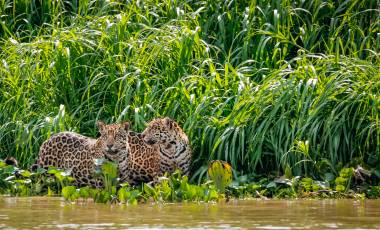Read time – 3 minutes
The 70’s E-Type Jaguar was the original red-blooded motor magnet. Throaty exhaust, smouldering headlights, sleek but masculine lines with a menacing build.
Its strap-line was ‘The 12 cylinder animal’. For years big brands have used animals to promote their products usually with scant regard to any ethical code. Not this car: all those adjectives, which are hardly lacking in the machismo department, are perfectly fitting for the Brazilian jaguar.
Photographing the Jaguar
I had spent months truffling and trawling the internet in search of inspiration for photographing this fabled cat. Most images were dull or messy; this is an animal that requires some luck to find.
It is a pilgrimage to get to their backyard. It is also fortunate there are any there at all, as the despicable skin trade of the 70’s and 80’s left an indelible mark on this feline’s heritage.
For twenty years I have been obsessed with leopards. Despite having been told the male jaguar was twice the size of its African cousin, I did not believe it.
Pantanal Wetlands
An introductory boat ride had followed a typical pattern: some birds, caimans and the magnificent river otters but no jaguars. As the sun dipped, the skipper Marcello cut the engine and pointed somewhere towards Bolivia, deep inside the Pantanal wetland.
Lounging on the beach was a massive cat. As the Yamaha engine died, the huge male sauntered down to drink, twenty metres from the bow. This was the grail. On the first evening.
My initial thoughts were obviously of size – this was bigger than a lioness – but also of its pattern. The sculpted prints of a leopard are replaced with rosettes the size of Home Counties gymkhana winners.
The cat barely acknowledged us, something which reassured me. As the insects began to claim their pound of flesh, he exited across the sandy stage and the emerald curtain closed behind him.
My other immediate thought was one of outrage that so many people from Mafia molls to decadent debutant dolls and other hideous fickle fashionistas have sported this immaculate coat across their own scrawny shoulders.
Andre Thuronyi was at the vanguard of wildlife tourism in Brazil. He has little interest in the upcoming football and Olympic spectaculars about to be unleashed on his largely sport-mad country.
His lodge, north of Porto Joffre where the jaguars roam, is a delight as are his charming wife and staff. He told me the genesis of jaguar tourism.
“Most of the people down there are sport fisherman, many years ago one of the boat handlers was gutting some fish and throwing them overboard when a jaguar grabbed the scraps. The next day the cat did it again, the following day the skipper charged the fisherman for the privilege. Out of acorns…”
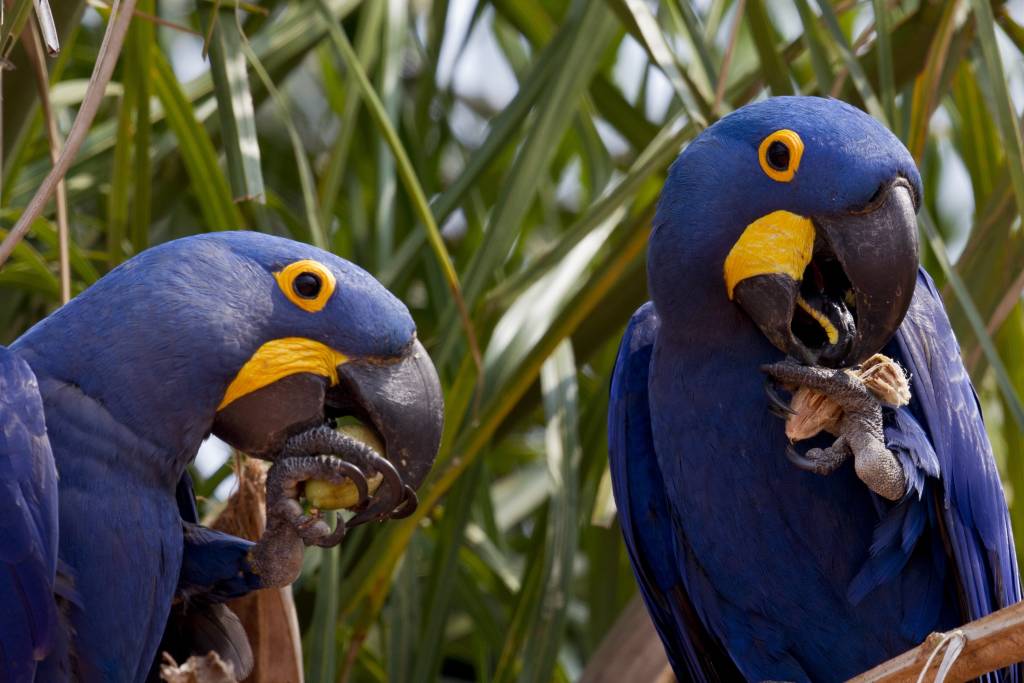 Colourful macaws
Colourful macaws
Jaguar Sightings
Across the week we had several sightings, one day even incorporated ‘The Prescott Moment’ as two youngsters appeared, soon followed by their mother.
The big male even showed up again, this time doing nothing. They really are monsters, the boys weighing in at around 135 kilos. They are not only bigger than their relations further afield but also than the Central American versions.
River otters fished voraciously with no quota limits, kingfishers dived for the scraps and caimans fought over the larger spoils.
As the clouds draped over the watery sunset and the large cat had not moved a muscle, I looked down to the golden peninsula and imagined this dappled panther positioned in my viewfinder – an image that no google search had revealed.
Changing the itinerary two days later to give us one last chance at the river monsters was a bold stroke. It paid off. In spades.
The same animal on the same beach gave us a peerless show next to the water. He got himself on a brochure cover, I don’t think he cares much, he didn’t look bothered.
He didn’t look hungry; his principle prey is a capybara, a beaver-like slow-coach that is easy to ambush. Araras Lodge, home of Andre, is the perfect spot to top and tail this magical journey.
Hyacinth macaws are the box office species in prime ornithological real estate, but all species with wings and without are metres from your door. None are as energetic as Andre though.
This place is enchanting; it is also loud, the avian alarm starts at four a.m. Everything about Brazil is loud and colourful, from people to flora and fauna, but particularly in this area off the Trans Pantaneira, it is a paradise with the volume turned up…. and a river runs through it.
Discover the wildlife of Brazil for yourself with our trips below.
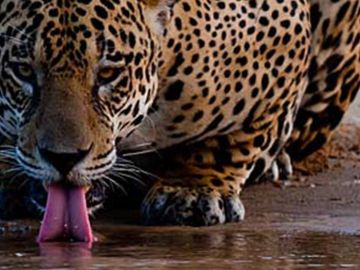
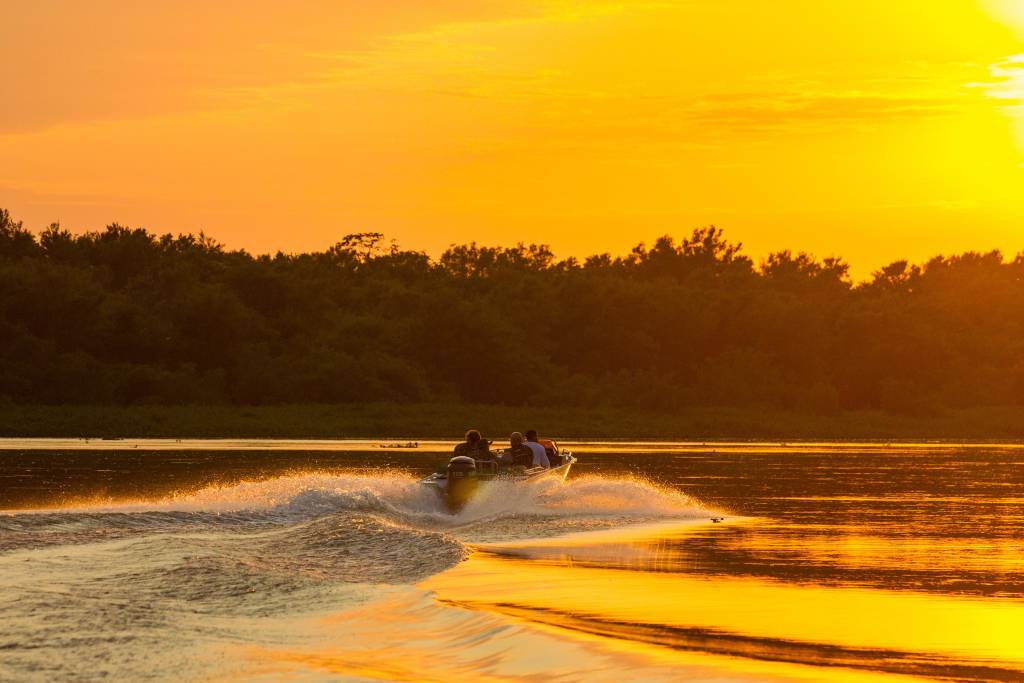 Pantanal Wetland
Pantanal Wetland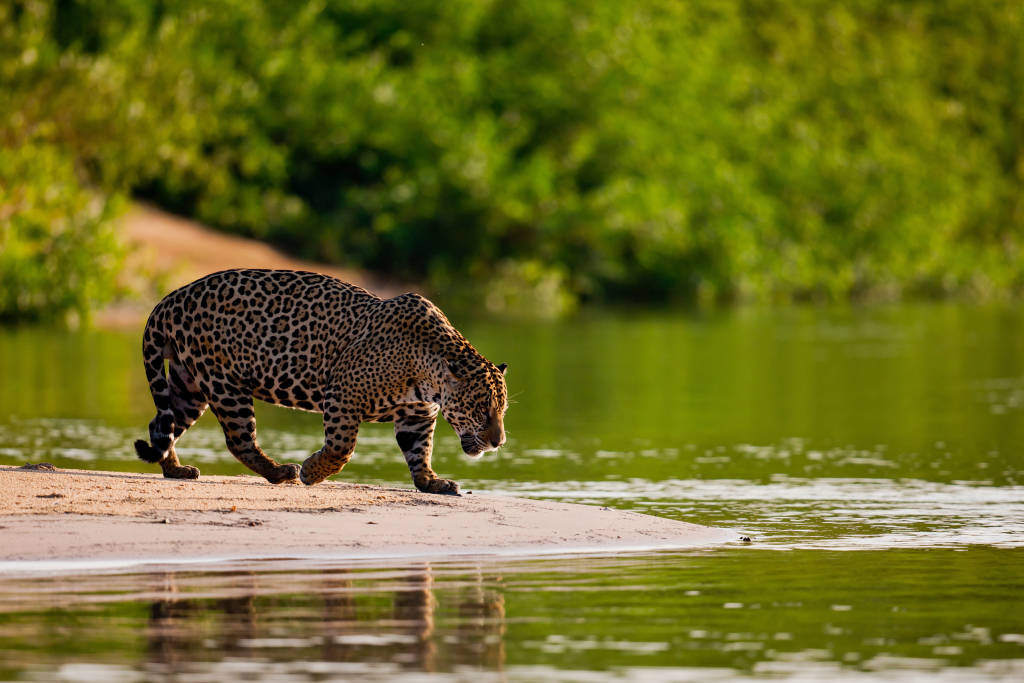 Brazilian jaguar
Brazilian jaguar